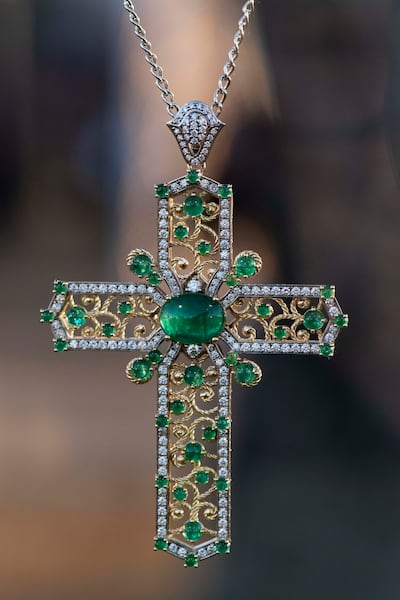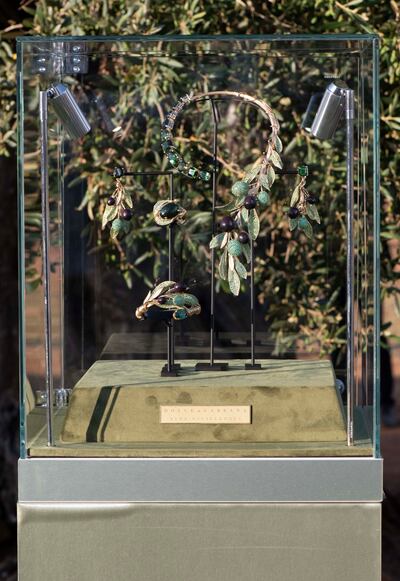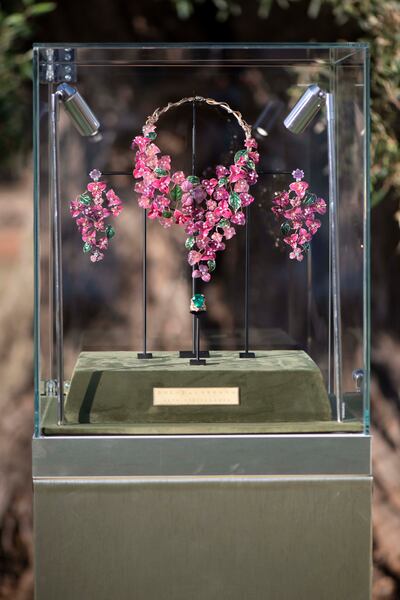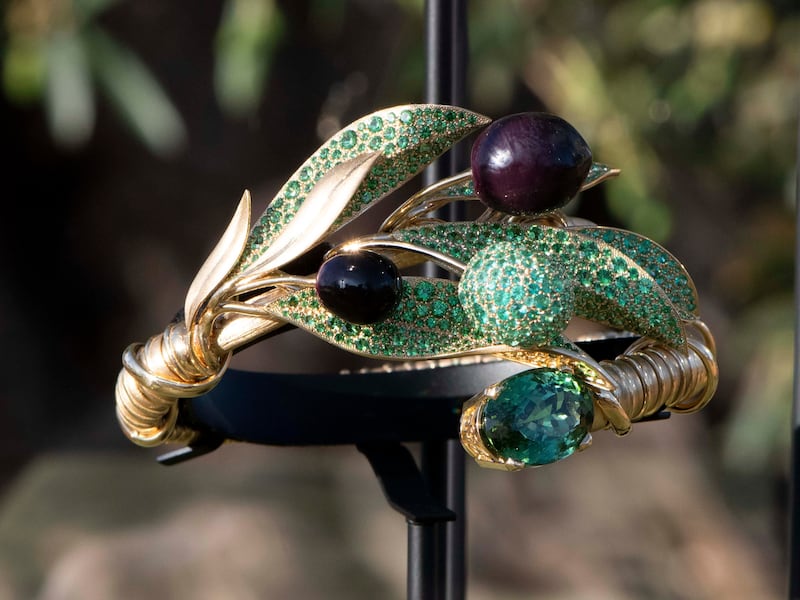It’s easy to get swept up in the magic of Italy as you drive through the winding streets of Puglia.
Single-lane roads are bordered by the Adriatic Sea, with hidden romantic bays, or baias, to one side and groves of olive trees to the other.
The region of the south of Italy is synonymous with the trees and olive oil, a treasured produce often referred to as green gold. “There are 59 million people in Italy and 60 million olive trees in Puglia,” my Apulian tour guide and driver Giuseppe Selicato-Pino tells me as we drove through a particularly dense spate of fields, with green as far as the eye could see. “Olive trees are Puglia.”
And this year, olives trees are also Dolce & Gabbana. The Italian design house held its annual Alta Moda show in Puglia this July, gathering clients and friends of the brand for a five-day celebration of fashion. And the ways in which the regional terrain has influenced its collections are clearer than ever in the Alta Gioielleria line.
The collection was unveiled at Spazio Ulivi Pettolecchia, a 15th-century fort surrounded by olive trees that date back as far as 4,000 years, making them some of the oldest olive trees in Puglia – “from before Christ, the Romans or the Turks”, Selicato-Pino reliably informs.

As if lifted from the branches of the surrounding trees, the Alta Gioielleria collection is awash in green, in the form of tourmaline, tsavorite, green diamonds and, of course, emeralds.
Speaking about the origins of the collection, Walter Veneruz, director of fine jewellery and watches at Dolce & Gabbana, tells me it all comes back to the roots of the region. “It’s deeply linked to the territory,” he says over an espresso in the brand’s Dubai showroom. “When Mr Dolce and Mr Gabbana approach an event like this, they study the territory, people, history, legends and nature; they really love nature, you can see that in all the flowers we have on our dresses.
“The most important things we have in Puglia are the olive trees and the olive oil,” he adds, explaining that from the beginning the premise was to pay tribute to the trees, with branchlike necklaces, bracelets, earrings and rings that carry olives crafted in enamel or set with sparkling stones, but also in the rich green and gold colour scheme that is prevalent throughout.
The olive sets are remarkable feats of craftsmanship; fronds hold golden leaves that have been hand-engraved with thousands of minute scores, resulting in a silk-like texture that lends a natural and matte finish, and a number of the olives are pave-set with thousands of stones of varying sizes and colours.

This nonconformity throughout the collection mirrors the wildness of nature. As is the case with every Alta Gioielleria presentation, no two pieces are the same, but this is played with to maximum effect, with differing hues used on individual pieces. “They are beautiful in their irregularity,” Veneruz says. “No stone is the same size or the same colour, some shine lighter because they are tsavorites, and others are emeralds. It is all to create the effect of real leaves.”
Puglia’s influence isn’t limited to olive trees. The region’s vibrant pink and purple bougainvillea trees, which scale houses and walls in every town, are represented in the form of an ornate necklace and earring parure. The cascading piece is crafted from yellow, white and pink gold, with striking enamel and glasswork forming the petals and leaves. It has been studded with dazzling diamonds, rubellite tourmalines and pink sapphires.

Away from nature, the region’s architecture is also honoured. In homage to Italy’s ornately decorated churches, crosses are a recurring motif throughout and the trulli architecture – dry stone buildings with conical roofs – that Puglia is synonymous with also has a place in the collection. However, the Alta Gioielleria treatment is more subtle than the tribute paid in the Alta Moda show, where woven basket headpieces were created to mirror the region’s famed roofs.
The jewellery collection presents a ring and bracelet set, presented in the same conical shape, with softer angles. The bracelet, crafted in yellow and white gold, features three green and blue Paraiba tourmalines and diamonds, built like a row of houses in the town of Alberobello, while the ring holds a solitary tourmaline, set above rows of 44 baguette-cut diamonds, functioning like bricks on the buildings.
A creative medley of gems, metals and carefully selected materials is used to create every handmade piece, a fine balance of the most vibrant stones the brand can source, with beauty at the heart of every decision. Veneruz explains that, although they only use the finest gems and materials available, it’s the aesthetics that mean the most.
“We start with beautiful stones, not necessarily very expensive, but beautiful ones,” he says. “The designers always say that the value isn’t the most important thing, but what the stones can express in terms of beauty is.”







